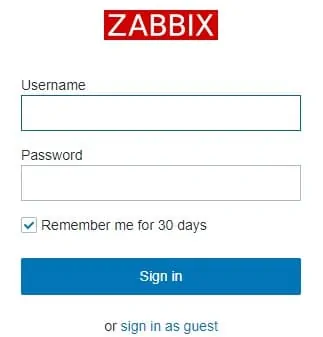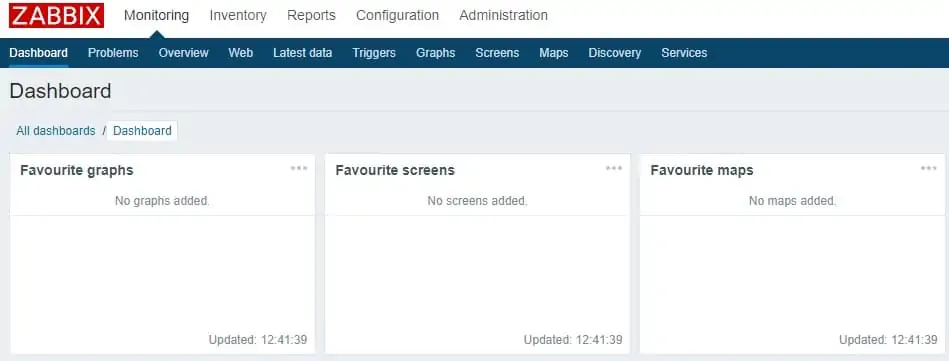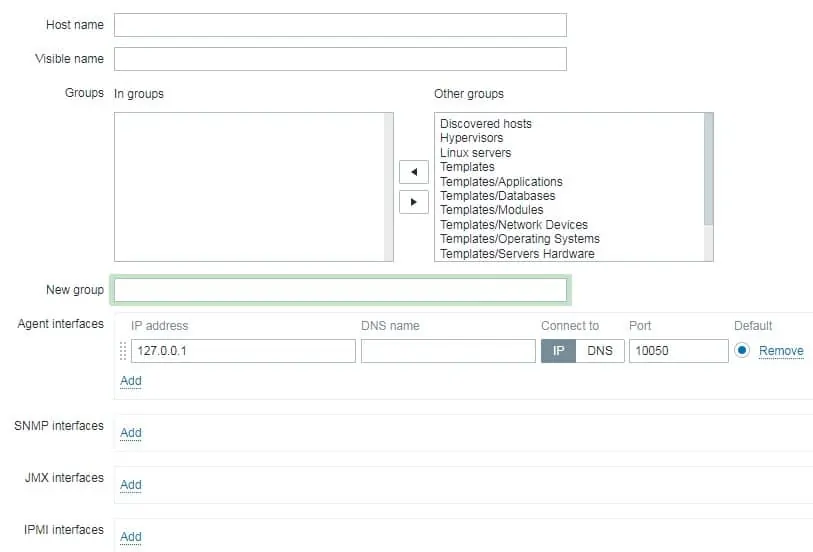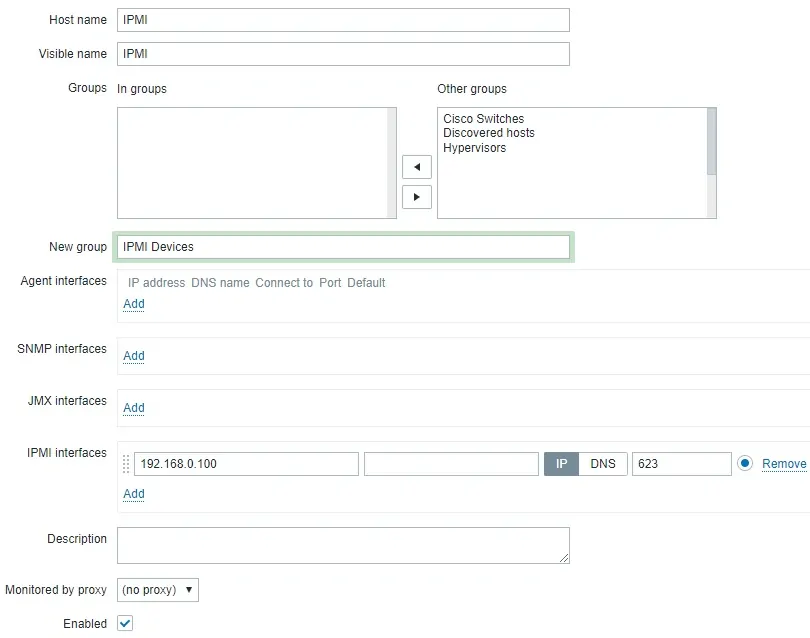Would you like to learn how to use the Zabbix IPMI monitor feature? In this tutorial, we are going to show you how to configure Zabbix to monitor a Host using IPMI protocol.
• Zabbix version: 3.4.12
• Ubuntu Linux version: 18
Hardware List:
The following section presents the list of equipment used to create this Zabbix tutorial.
Every piece of hardware listed above can be found at Amazon website.
Zabbix Playlist:
On this page, we offer quick access to a list of videos related to Zabbix installation.
Don't forget to subscribe to our youtube channel named FKIT.
Zabbix Related Tutorial:
On this page, we offer quick access to a list of tutorials related to Zabbix installation.
Tutorial - Enable Zabbix IPMI Monitoring
First, we need to install the IPMITOOL package to enable Zabbix to perform IPMI checks.
We also need to take note of the IPMITOOL program location.
Use the WHICH command to find out the IPMITOOL program location.
# apt-get update
# apt-get install openipmi libopenipmi0 ipmitool
# which ipmitool
/usr/bin/ipmitool
In our example, the IPMITOOL program was found inside the directory: /usr/bin
Next, we need to edit the Zabbix server configuration file and enable the IPMI monitor feature.
On the Linux console, use the following commands to find the location of the zabbix_server.conf file.
In our example the zabbix_server.conf file was located under /usr/local/etc.
After finding, you need to edit the zabbix_server.conf file.
# updatedb
# locate zabbix_server.conf
# vi /usr/local/etc/zabbix_server.conf
Here is the original file, before our configuration.
LogFile=/tmp/zabbix_server.log
DBHost=localhost
DBName=zabbix
DBUser=zabbix
DBPassword=kamisama321
Timeout=4
LogSlowQueries=3000
Add StartIPMIPollers=5 at the end of the configuration file.
Here is the new file with our configuration.
LogFile=/tmp/zabbix_server.log
DBHost=localhost
DBName=zabbix
DBUser=zabbix
DBPassword=kamisama321
Timeout=4
LogSlowQueries=3000
StartIPMIPollers=5
The Zabbix server was configured to start automatically 5 processes to collect IPMI information.
Now, you need to restart the Zabbix service.
If you used our installation guide, you can restart Zabbix using the following command:
# /etc/init.d/zabbix-server restart
If the Zabbix server was started successfully, you should see a message similar to this on the log file:
25217:20180924:114910.972 server #15 started [ipmi poller #1]
25218:20180924:114910.973 server #16 started [ipmi poller #2]
25219:20180924:114910.985 server #17 started [ipmi poller #3]
25220:20180924:114910.977 server #18 started [ipmi poller #4]
25221:20180924:114910.973 server #19 started [ipmi poller #5]
In our example, the Zabbix server log file zabbix_server.log is located inside the /tmp directory.
In our example, the Zabbix server started 5 IPMI data collector processes automatically.
Use the following command to get a list of the IPMI sensors available on your device.
# ipmitool -I lanplus -H 10.0.1.220 -U root -P calvin sensor
Keep in mind that, you will have to change the username and password to reflect your IPMI device.
In our example, the username root and the password calving are the default administrative login and password of a Dell iDRAC interface.
The system should present the list of IPMI sensors available.
Temp | na | | na | na | na | na | 85.000 | 90.000 | na
Temp | na | | na | na | na | na | 85.000 | 90.000 | na
Temp | na | | na | na | 3.000 | 8.000 | 42.000 | 47.000 | na
Temp | na | | na | na | 3.000 | 8.000 | 42.000 | 47.000 | na
Ambient Temp | 27.000 | degrees C | ok | na | 3.000 | 8.000 | 42.000 | 47.000 | na
Planar Temp | na | | na | na | 3.000 | 8.000 | 90.000 | 95.000 | na
CMOS Battery | 0x0 | discrete | 0x0080| na | na | na | na | na | na
ROMB Battery | na | discrete | na | na | na | na | na | na | na
VCORE PG | 0x0 | discrete | 0x0180| na | na | na | na | na | na
VCORE PG | 0x0 | discrete | 0x0180| na | na | na | na | na | na
0.75 VTT PG | 0x0 | discrete | 0x0180| na | na | na | na | na | na
0.75 VTT PG | 0x0 | discrete | 0x0180| na | na | na | na | na | na
CPU VTT PG | 0x0 | discrete | 0x0180| na | na | na | na | na | na
1.5V PG | 0x0 | discrete | 0x0180| na | na | na | na | na | na
1.8V PG | 0x0 | discrete | 0x0180| na | na | na | na | na | na
5V PG | 0x0 | discrete | 0x0180| na | na | na | na | na | na
MEM CPU2 FAIL | 0x0 | discrete | 0x0180| na | na | na | na | na | na
5V Riser1 PG | 0x0 | discrete | 0x0180| na | na | na | na | na | na
MEM CPU1 FAIL | 0x0 | discrete | 0x0180| na | na | na | na | na | na
VTT CPU2 FAIL | 0x0 | discrete | 0x0180| na | na | na | na | na | na
VTT CPU1 FAIL | 0x0 | discrete | 0x0180| na | na | na | na | na | na
0.9V PG | 0x0 | discrete | 0x0180| na | na | na | na | na | na
CPU2 1.8 PLL PG | 0x0 | discrete | 0x0180| na | na | na | na | na | na
CPU1 1.8 PLL PG | 0x0 | discrete | 0x0180| na | na | na | na | na | na
1.1 FAIL | 0x0 | discrete | 0x0180| na | na | na | na | na | na
1.0 LOM FAIL | 0x0 | discrete | 0x0180| na | na | na | na | na | na
1.0 AUX FAIL | 0x0 | discrete | 0x0180| na | na | na | na | na | na
FAN MOD 1A RPM | 6360.000 | RPM | ok | na | 2640.000 | na | na | na | na
FAN MOD 1B RPM | 4560.000 | RPM | ok | na | 1920.000 | na | na | na | na
FAN MOD 2A RPM | 6480.000 | RPM | ok | na | 2640.000 | na | na | na | na
FAN MOD 2B RPM | 4440.000 | RPM | ok | na | 1920.000 | na | na | na | na
FAN MOD 3A RPM | 6360.000 | RPM | ok | na | 2640.000 | na | na | na | na
FAN MOD 3B RPM | 4560.000 | RPM | ok | na | 1920.000 | na | na | na | na
FAN MOD 4A RPM | 6480.000 | RPM | ok | na | 2640.000 | na | na | na | na
FAN MOD 4B RPM | 4440.000 | RPM | ok | na | 1920.000 | na | na | na | na
FAN MOD 5A RPM | na | | na | na | 2640.000 | na | na | na | na
FAN MOD 5B RPM | na | | na | na | 1920.000 | na | na | na | na
FAN MOD 6A RPM | na | | na | na | 2640.000 | na | na | na | na
FAN MOD 6B RPM | na | | na | na | 1920.000 | na | na | na | na
Presence | 0x0 | discrete | 0x0180| na | na | na | na | na | na
Presence | 0x0 | discrete | 0x0180| na | na | na | na | na | na
Heatsink Pres | 0x0 | discrete | 0x0180| na | na | na | na | na | na
Presence | 0x0 | discrete | 0x0280| na | na | na | na | na | na
Presence | 0x0 | discrete | 0x0280| na | na | na | na | na | na
Presence | 0x0 | discrete | 0x0180| na | na | na | na | na | na
Congratulations! you have enabled the feature required to monitor IPMI on Zabbix.
You can now use the Zabbix server dashboard to monitor IPMI devices.
Tutorial - Zabbix Monitor IPMI
Now, we need to access the Zabbix server dashboard and add the IPMI device as a Host.
Open your browser and enter the IP address of your web server plus /zabbix.
In our example, the following URL was entered in the Browser:
• http://35.162.85.57/zabbix
On the login screen, use the default username and default password.
• Default Username: Admin
• Default Password: zabbix

After a successful login, you will be sent to the Zabbix Dashboard.

On the dashboard screen, access the Configuration menu and select the Host option.

On the top right of the screen, click on the Create host button.
On the Host configuration screen, you will have to enter the following information:
• Host Name - Enter a Hostname to monitor.
• Visible Hostname - Repeat the hostname.
• New group - Enter a name to identify a group of similar devices.
• Agent Interfaces - Click on the Remove option.
• IPMI Interfaces - Enter the IP address of the Hostname.
Here is the original image, before our configuration.

Here is the new image with our configuration.

Click on the Add button to include this host on the Zabbix database.
On the dashboard screen, access the Configuration menu and select the Host option.

Locate and click on the hostname that you created before.
In our example, we selected the hostname: IPMI
On the Host properties screen, access the Applications tab.
On the top right part of the screen, click on the Create application button.
On the Host applications screen, create a new application named IPMI.

After finishing the Application creation, access the Items tab.
On the top right part of the screen, click on the Create item button.
On the Item creation screen, you need to configure the following items:
• Name: Enter an identification to the IPMI monitoring item.
• Type: IPMI Agent
• Key: Create a custom identification key
• IPMI Sensor: Enter the name of an IPMI sensor available on your device
• Type of Information: Numeric (Float)
• Units: C
• Update interval: 60 Seconds
• Show value: As is
• Application: IPMI

Click on the Add button and finish the Item creation.
Wait 5 minutes.
In order to test your configuration, access the Monitoring menu and click on the Latest data option.

Use the filter configuration to select the desired hostname.
In our example, we selected the hostname IPMI
Click on the Apply button.

You should be able to see the results of your IPMI monitoring using Zabbix.

Congratulations! You have configured the Zabbix server to monitor a host using IPMI.
